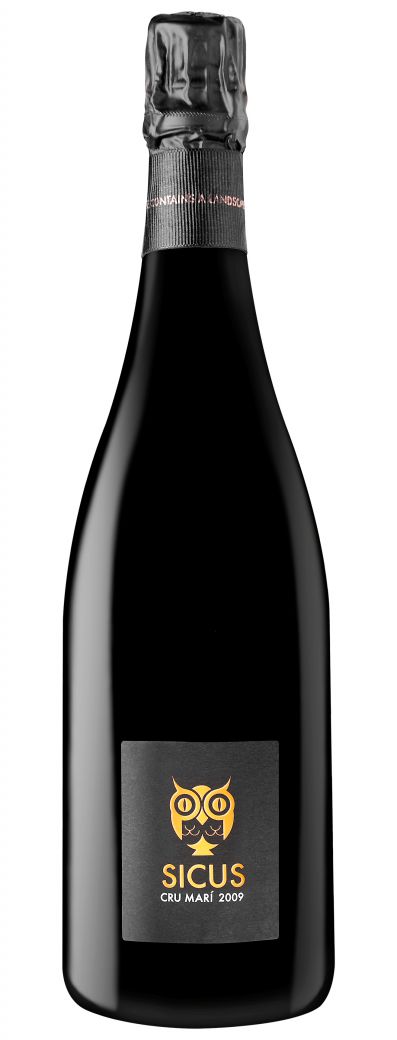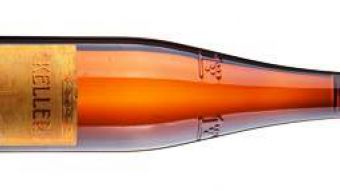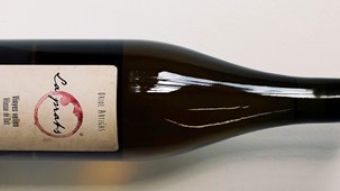Sicus Cru Marí 2009.
 Eduard Pié exercises his “discreet wisdom” in Bonastre. Lying on gentle slopes inland (over 300 metres above sea level), his Xarel.lo, Xarel.lo rojo and Monastrell vineyards inhabit the south, where the soil is more limestone and close to the bedrock of the Garraf Massive (near Tarragona), and where they drink in the air and moisture of the nearby sea. Eduard is the son and grandson of winemakers, but his complicity with the land and its grapes comes from much further back: it is as old as the Mediterranean land where he was born. In him, it is innate. He has not ploughed the land for years and has let the roots of his vines learn the lesson of self-sufficiency. These therefore produce more concentrated grapes, expressing the character of each vintage and the aromas of the Sierra de Bonastre, like few other vines can. Nothing better, in my opinion, than secondary fermentation in bottle (a traditional “brut nature” sparkling method, without DO), to affix and faithfully transmit these flavours. Cru Marí is produced from Xarel.lo of average age growing in a single parcel (La Caseta), fermented in stainless steel and left to develop for ten more months before going into bottle, where secondary fermentation took place, creating the bubbles without added sugar. The sparkling wine spent four years “sur latte”. I had the fabulous opportunity of trying and comparing one of these wines, disgorged some time ago and preserved in the cellars (15.1.14), with the one currently available on the market (20.1.15). My only advice would be not to drink these sparkling wines too chilled (about 10°C is ideal) and, above all, to open the bottle at least one hour before serving so that the long-aged wine gets used to the oxygen again. I enjoyed both sparkling wines equally, but the bottle which spent one year resting after it was disgorged shows organoleptic characteristics that differ somewhat to those offered by the recently disgorged bottle, although both are from the 2009 vintage and the same wine.
Eduard Pié exercises his “discreet wisdom” in Bonastre. Lying on gentle slopes inland (over 300 metres above sea level), his Xarel.lo, Xarel.lo rojo and Monastrell vineyards inhabit the south, where the soil is more limestone and close to the bedrock of the Garraf Massive (near Tarragona), and where they drink in the air and moisture of the nearby sea. Eduard is the son and grandson of winemakers, but his complicity with the land and its grapes comes from much further back: it is as old as the Mediterranean land where he was born. In him, it is innate. He has not ploughed the land for years and has let the roots of his vines learn the lesson of self-sufficiency. These therefore produce more concentrated grapes, expressing the character of each vintage and the aromas of the Sierra de Bonastre, like few other vines can. Nothing better, in my opinion, than secondary fermentation in bottle (a traditional “brut nature” sparkling method, without DO), to affix and faithfully transmit these flavours. Cru Marí is produced from Xarel.lo of average age growing in a single parcel (La Caseta), fermented in stainless steel and left to develop for ten more months before going into bottle, where secondary fermentation took place, creating the bubbles without added sugar. The sparkling wine spent four years “sur latte”. I had the fabulous opportunity of trying and comparing one of these wines, disgorged some time ago and preserved in the cellars (15.1.14), with the one currently available on the market (20.1.15). My only advice would be not to drink these sparkling wines too chilled (about 10°C is ideal) and, above all, to open the bottle at least one hour before serving so that the long-aged wine gets used to the oxygen again. I enjoyed both sparkling wines equally, but the bottle which spent one year resting after it was disgorged shows organoleptic characteristics that differ somewhat to those offered by the recently disgorged bottle, although both are from the 2009 vintage and the same wine.
The bottle rested for one year after disgorging: finer, less copious bubbles and immediate aromas of yeast and pastries, autolysis. It shows greater depth on the nose. Quince flesh. “Roscón de Reyes” (fruity brioche). The Xarel.lo shows more depth, a more varietal aftertaste, more bitterness, that of the vine’s roots: noble vegetal. This wine is like the hearth in the last home, with embers hidden under the ash. The ship and its crew have already sailed through a few storms. They may even have rounded Cape Horn. They relate their experience as this wine does: quietly, with emotion. Phosphorus and sunset on the first of September. The cork expands less ... More rest and tranquility? The wine dominates the effervescence. More complex, more nuances, and also greater volume on the palate.
The recently disgorged bottle: abundant, long-lasting bubbles. Distinct citrus notes. Not so much depth on the nose. It smells of citron and shows a more chalky and mineral character. Pure and persistent. Finer and slender on the palate, deeper and more honed. Acidity. It is like the hearth in the first home, the fire is ablaze. It is beginning the story of its navigation: the ship and its crew are setting sail in good humour. Talc and silica. Bright sun in the harbour on a fresh May morning. The cork expands more quickly and easily. Intensity and energy on the palate. The effervescence pushes out the flavours.
Both sparkling wines (the same wine from a single terroir) reflect the spirit of the scrub undergrowth: pinches of thyme and oregano, wild olives among the rocks. A sea breeze. Persistent, intense aromas. Mediterranean.
Without hesitation, I would go for the recently disgorged Sicus Marí 2009 and would keep it for a few months, waiting for the special moment that any bottle of great wine deserves.





